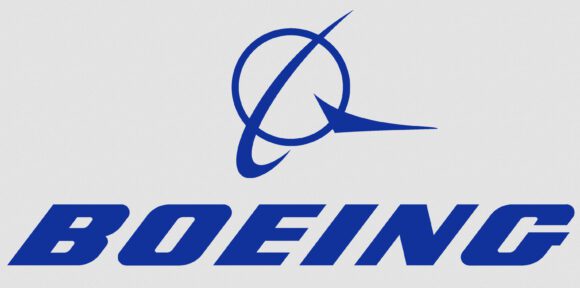E-taxi pioneers Wheeltug just released research (ground operations summary 31 Mar 2016) it undertook monitoring airport operations. The case for adding e-taxi capabilities to aircraft has tended to focus on saving fuel burn. But fuel burn is no longer such an important issue in cost terms, though in “green” terms cutting fuel burn is still attractive. Wheeltug has, for some time now, been focusing on time savings rather than fuel savings. A generally accepted cost for airline operations is $100 per minute. More on this shortly.
Wheeltug estimates that by deploying e-taxi, an airline could save approximately a total of seven minutes per aircraft per gate push-back. Wheeltug’s research indicates push-back times vary a lot and the next chart shows just by how much. Wheeltug claims that the average push-back time is 5:35, but note the huge standard deviation. (The data source is Flightwatching and based on a complete set of 6700 monitored flights) This means that airline ground operations not only take 5:35, but airlines must assume that push-backs could take significantly longer. Schedules get seriously impacted waiting for one aircraft in, say, 10 that takes 12 minutes to push-back. The wide distribution of push-back times forces extra padding into airline block times.
 To comprehend the meaning of this let’s look at real world examples. In the next table we have a few selected airlines that demonstrate the impact of faster flight operations with respect to airport gate turnaround times. The yellow cells represent estimates because we did not get responses from these airlines in time for this story. Wheeltug estimates that their 5:35 rises to about seven minutes because they include estimated ground crew and tower savings. Let’s assume that is reasonable.
To comprehend the meaning of this let’s look at real world examples. In the next table we have a few selected airlines that demonstrate the impact of faster flight operations with respect to airport gate turnaround times. The yellow cells represent estimates because we did not get responses from these airlines in time for this story. Wheeltug estimates that their 5:35 rises to about seven minutes because they include estimated ground crew and tower savings. Let’s assume that is reasonable.
In the table we layout the financial impact of these time savings and the $100 per operational minute against single aisle fleets. One can see how that $100 number adds to serious money when considering speeding up airline operations.
Essentially the savings could provide an airline with a lot of extra time every day and that time is worth a staggering amount of money. For American Airlines and Southwest Airlines, the number is around a billion dollars per year. Even British Airways, with the smallest potential savings of $166m, should find this item riveting. Every airline, especially network airlines, are desperate to find operational savings. Here we see an example staring them in the face.
One can argue the number of minutes and the dollars per minute. Change them, and even then, the potential dollars saved is a large number. Readers working at an airline, try these numbers on your airline’s single aisle fleet. Certainly large enough to warrant a lot of attention, right?
Anyone who flies knows airlines routinely pad schedules because of the numerous exogenous factors that push schedules to the right. Running an airline on schedule is surely one of the world’s greatest acts of faith outside of organized religion.
So what does this mean for these sample airlines on a daily basis? The next table attempts an answer.
Airlines that deploy e-taxi could see big time savings that could mean getting another flight out each aircraft every other day or simply serious financial benefits – taking 30 minutes as a guide, this is worth $3,000 per day per plane. Improved operational efficiencies are significant.
And that ignores the other benefits from things like quieter airports and less air pollution. It appears a lot of tangible benefits could come from deploying a technology like e-taxi.
Views: 0







So how do you justify the $100/minute cost per plane during pushback/taxi????
http://airlines.org/data/per-minute-cost-of-delays-to-u-s-airlines/
I would suggest two sources of value. One is utilization. This varies by airline and situation of course – but schedules can be shifted to enable more segments or longer segments with effective block-hours per flight being reduced. Using annual reports, a ‘normal’ value is $30/minute. Obvious AirInsight has a much higher direct value in the link above.
The second is passenger satisfaction. Air travel is increasingly a commodity business – there are few differentiators. A significantly faster boarded->take-off experience would be differentiating. Nobody likes sitting there waiting for something to happen. Passenger time is valued by the FAA between $0.54/minute/passenger and $0.84 cents. A very interesting piece by Prof. Silke Forbes suggested $0.77 was an appropriate value. With an average loading of passengers (Transtats, for narrowbodies), $0.77 is $113/minute.
$30 + $113 is about $140. Using the direct costs from the link, $113 + is $195/min.
Perhaps the United number is just 737/A320 class?
I think the seven minute number might be too low. After all, if you are a hub operator and expect ninety eight percent of your flights to be on time, you have to block out twelve to fifteen minutes for every single pushback to make sure that one slow pushback does not lead to cascading delays across the network.
If the pushback can be reliably performed in a short time, then the time saved across the network for a hub operator might be even greater than for a point-to-point airline.
Please excuse the video spam -we are working to resolve this. If you comment don’t use numbers, type the number in words please.